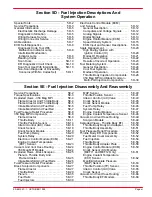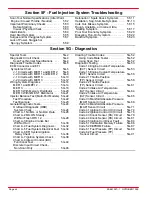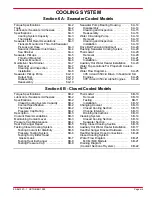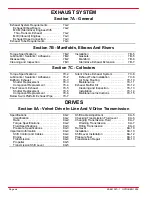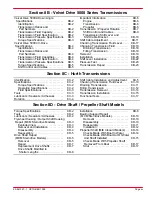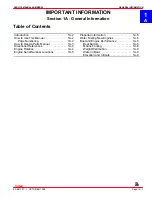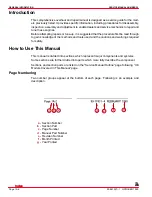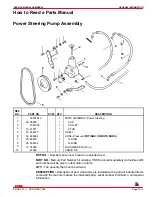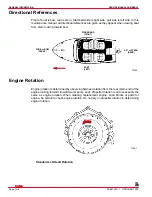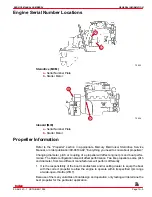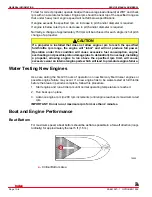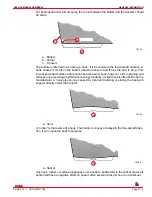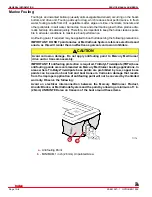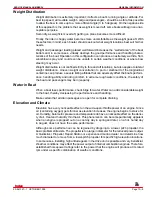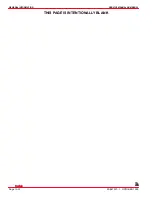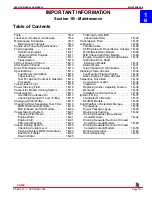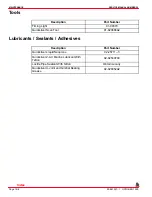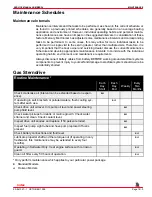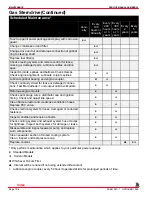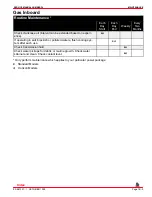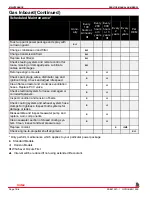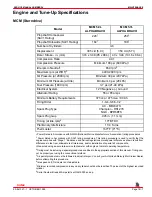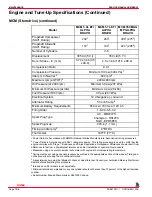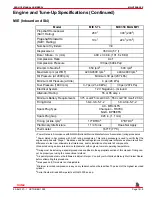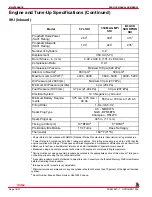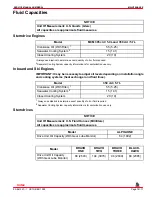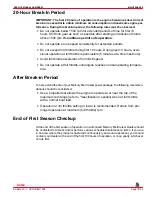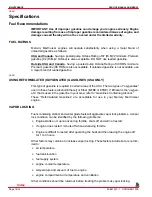
GENERAL INFORMATION
SERVICE MANUAL NUMBER 24
90-861327--1 OCTOBER 1999
Page 1A-9
Weight Distribution
Weight distribution is extremely important; it affects a boat’s running angle or attitude. For
best top speed, all movable weight - cargo and passengers - should be as far aft as possible
to allow the bow to come up to a more efficient angle (3 to 5 degrees). On the negative side
of this approach is the problem that, as weight is moved aft, some boats will begin an unac-
ceptable porpoise.
Secondly, as weight is moved aft, getting on plane becomes more difficult.
Finally, the ride in choppy water becomes more uncomfortable as the weight goes aft. With
these factors in mind, each boater should seek out what weight locations best suit his/her
needs.
Weight and passenger loading placed well forward increases the “wetted area” of the boat
bottom and, in some cases, virtually destroys the good performance and handling charac-
teristics of the boat. Operation in this configuration can produce an extremely wet ride, from
wind-blown spray, and could even be unsafe in certain weather conditions or where bow
steering may occur.
Weight distribution is not confined strictly to fore and aft locations, but also applies to lateral
weight distribution. Uneven weight concentration to port or starboard of the longitudinal
centerline can produce a severe listing attitude that can adversely affect the boat’s perform-
ance, handling ability and riding comfort. In extreme rough water conditions, the safety of
the boat and passengers may be in jeopardy.
Water in Boat
When a boat loses performance, check bilge for water. Water can add considerable weight
to the boat, thereby decreasing the performance and handling.
Make certain that all drain passages are open for complete draining.
Elevation and Climate
Elevation has a very noticeable effect on the wide-open-throttle power of an engine. Since
air (containing oxygen) gets thinner as elevation increases, the engine begins to starve for
air. Humidity, barometric pressure and temperature do have a noticeable effect on the densi-
ty of air. Heat and humidity thin the air. This phenomenon can become particularly apparent
when an engine is propped out on a cool dry day in spring and later, on a hot, humid day
in August, does not have the same performance.
Although some performance can be regained by dropping to a lower pitch propeller, the
basic problem still exists. The propeller is too large in diameter for the reduced power output.
A Quicksilver Propeller Repair Station or experienced marine dealer can determine how
much diameter to remove from a lower-pitch propeller for specific high-elevation locations.
In some cases, installing high altitude gears in the drive unit is possible and very beneficial.
Weather conditions may effect the power output of internal combustion engines. Therefore,
established horsepower ratings refer to the power that the engine will produce at its rated
rpm under a specific combination of weather conditions.
Index
Index

